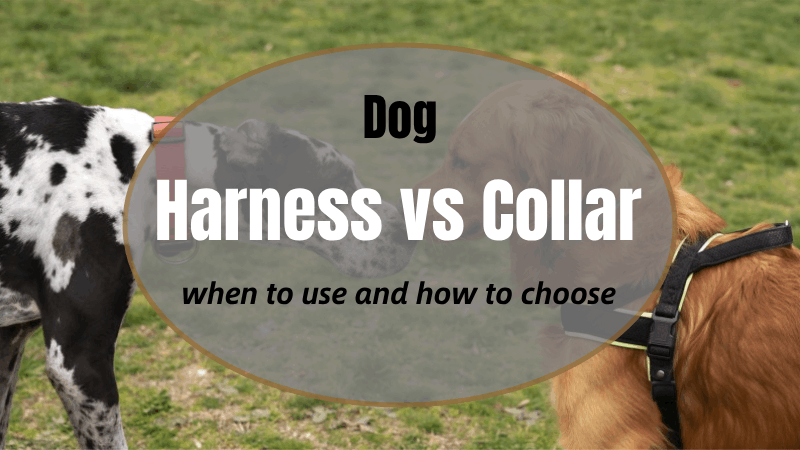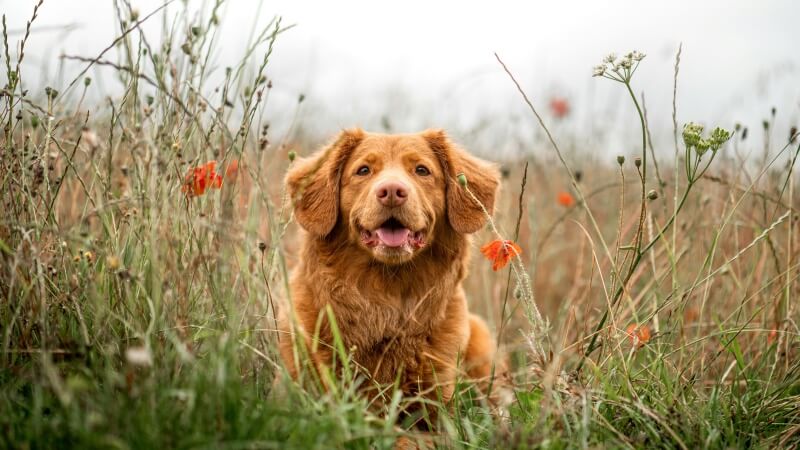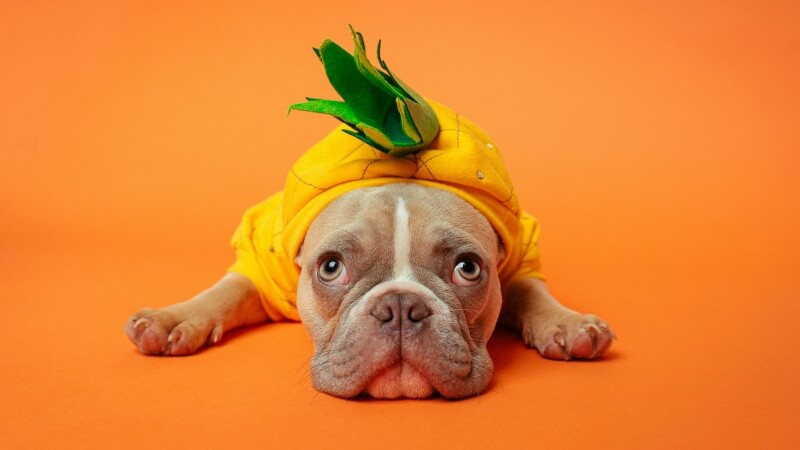
How To Craft A Cozy Cat Vest From Fabric Strips
Have you ever seen your feline friend lounging around and thought, “What could possibly make this picture more adorable?” The answer is simple: a cat

Hello, it’s Sophie. Today, we’re going to talk about something a bit different. Let me share my experience of choosing the best for your dog: Harness vs Collar.
As a dog owner, I’ve often found myself standing in the pet aisle, marveling at the wide array of dog gear available. From sleek collars in every color imaginable to sturdy harnesses designed for various needs, the options are endless.
But this isn’t just a fashion statement; choosing the right equipment for our canine companions is a decision that goes far beyond aesthetics. It’s about their health, safety, and comfort.
I remember the first time I bought a collar and harness for my dog, Max, a lively Labrador with a knack for pulling on his leash during walks. The collar was a simple, navy-blue nylon band adorned with a small, shiny tag bearing his name and my contact information.
It was more than just a piece of accessory; it was his identifier, a symbol of belonging, and a safety measure. However, I quickly realized that the collar alone wasn’t sufficient for our daily walks. Max’s enthusiastic tugging, while harmless in intent, raised concerns about the strain on his neck and trachea.
This led me to explore the world of dog harnesses. After some research, I settled on a tactical dog harness that promised better control and minimized strain on Max’s neck during our walks. The difference was noticeable right from the first use. Max seemed more comfortable, and I felt more in control, it was a win-win situation for both of us.
In this article, we’ll delve deep into why dogs, much like Max, need both a collar and a harness and how these tools play a crucial role in their health and safety.
Whether you’re a new dog parent or looking to upgrade your furry friend’s gear, understanding the nuances of each option will help you make the best choice for your beloved pet.
Let’s explore the roles, risks, and benefits of dog collars and harnesses, guiding you through the journey of making the right choice for your dog’s needs.
When I first brought Max home, like many dog owners, I started with a collar. It’s a traditional symbol of dog ownership, a staple in pet handling and training. Collars are convenient for attaching ID tags and a leash, and they come in various styles and materials, suitable for dogs of all sizes and breeds.
However, my experience with Max led me to understand that collars aren’t without their risks. For instance, dogs that pull or attempt to escape can find themselves at risk of neck injuries.
You may want to know: Tips To Prevent Dogs From Escaping From It!
Small breeds like miniature poodles can suffer from tracheal collapse if a collar exerts too much pressure on their delicate throats. Similarly, breeds with thicker necks, such as pugs and whippets, can sometimes slip out of their collars, raising escape and safety concerns.
The primary function of a collar, though, remains invaluable. It holds identification and contact details, which are essential in case your dog gets lost. A collar also signals that a dog has a home and is cared for, which can be crucial if they wander off.
Therefore, while the collar has its limitations in terms of control and safety during walks, it’s an essential part of a dog’s everyday life.
I’ve addressed all the questions pet owners might have: harness vs collar. When I first introduced Max to a harness, the change in our walks was immediate and positive. Harnesses distribute pressure across a larger area of the dog’s body, reducing strain on the neck and back.
This is particularly beneficial for dogs prone to pulling or those with respiratory issues.
However, it’s crucial to choose the right harness and ensure it fits correctly. A poorly fitted harness can cause discomfort, allow a dog to escape, or even lead to injuries.
You may want to know: 10 Types Of Best No-Pull Dog Harnesses That Will Transform Your Walks
I spent a considerable amount of time measuring Max and adjusting the harness to ensure a snug yet comfortable fit. While I have a fondness for tactical dog harnesses, it’s important to remember that a harness is not a one-size-fits-all solution; every dog is unique in both size and shape.
Moreover, patience is key when introducing a harness to your dog. Max needed some time to get used to wearing his harness. I started by letting him wear it around the house for short periods before our walks, ensuring it was a positive experience with lots of treats and praise, also, incorporating dog commands training during this process is very essential.
In my journey with Max, I’ve learned that different activities call for different gear.
To help you decide what’s best for your dog in various scenarios, here’s a comprehensive table guide:
| Activity | Gear | Reason |
|---|---|---|
| Home Relaxation | Collar | Comfortable for wearing all day, keep ID tags accessible. |
| Yard Patrolling | Harness or Collar | For a fenced yard, a collar is fine. If your dog tends to chase or jump, a harness offers better control. |
| Play Dates | Harness | A harness provides better control and safety during active play and socialization. |
| Dog Park Visits | Harness | Harnesses provide quick control in dynamic environments like dog parks, especially in unpredictable situations. |
| Neighborhood Walks | Harness | Ideal for controlled walking, especially for dogs that pull. |
| City Walks | Harness | Provides better control in busy urban environments, ensuring safety among crowds and traffic. |
| Trail Running | Harness | A harness ensures safety and control on uneven terrain, especially important for high-energy activities. |
| Hiking | Sturdy Harness | Offers control and safety on uneven trails, beneficial for managing your dog around wildlife or other hikers. |
| Biking | Quality Harness | If your dog accompanies you on bike rides, known as bikejoring, a specialized harness designed for biking ensures safety and prevents tangling. |
| Water Activities | Life Jacket/Harness | A life jacket for swimming or boating ensures safety; some have handle grips for easy lifting. |
| Car Rides | Car Safety Harness | Specially designed to keep your dog secure and safe during car travels. |
| Agility Training | Performance Harness | These harnesses allow freedom of movement while providing control during agility training. |
| Long-Distance Hiking | Hiking Harness | A more robust harness with possible attachments for gear, suitable for long treks. |
| Outdoor Camping | Reflective Harness | For camping, a reflective harness ensures your dog is visible and safe at night. |
| Snowy Conditions | Insulated Harness | Provides warmth and visibility in snow, ideal for cold-weather walks or play. |
This table serves as a general guideline, but remember, every dog is unique. The best choice depends on your dog’s size, breed, temperament, and specific needs.
Navigating the world of harness vs collar can be overwhelming, but understanding their respective roles and advantages makes a significant difference in your dog’s well-being and peace of mind.
As Max and I have journeyed together, embracing both a collar for identification and a harness for controlled, safe walks, I’ve seen a remarkable improvement in our outdoor adventures.
I invite you, fellow dog lovers, to share your own experiences. How do you gear up your furry friends for different activities? Your stories and photos are not just welcome but eagerly anticipated by our website.


Have you ever seen your feline friend lounging around and thought, “What could possibly make this picture more adorable?” The answer is simple: a cat

The moment you consider a dog hunting vest for your adventurous companion, you’re stepping into a world where safety meets functionality. This vest is not

The concept of a dog cooling vest is a game-changer for pet owners looking to enhance their dog’s comfort during those relentless summer days. Imagine

When you first consider crafting a tactical dog vest, it’s not just about embarking on a fun DIY project; it’s about ensuring your furry companion’s

Have you ever seen your feline friend lounging around and thought, “What could possibly make this picture more adorable?” The answer is simple: a cat

The moment you consider a dog hunting vest for your adventurous companion, you’re stepping into a world where safety meets functionality. This vest is not

The concept of a dog cooling vest is a game-changer for pet owners looking to enhance their dog’s comfort during those relentless summer days. Imagine

When you first consider crafting a tactical dog vest, it’s not just about embarking on a fun DIY project; it’s about ensuring your furry companion’s
Secure and Empower, Walk Responsibly
Copyright © 2025pettacticalharness. All Rights Reserved.